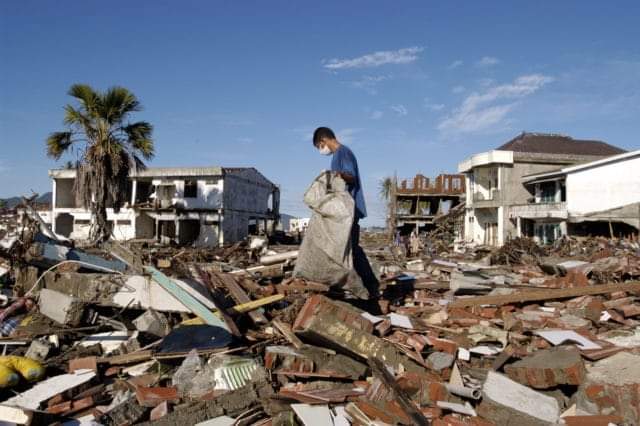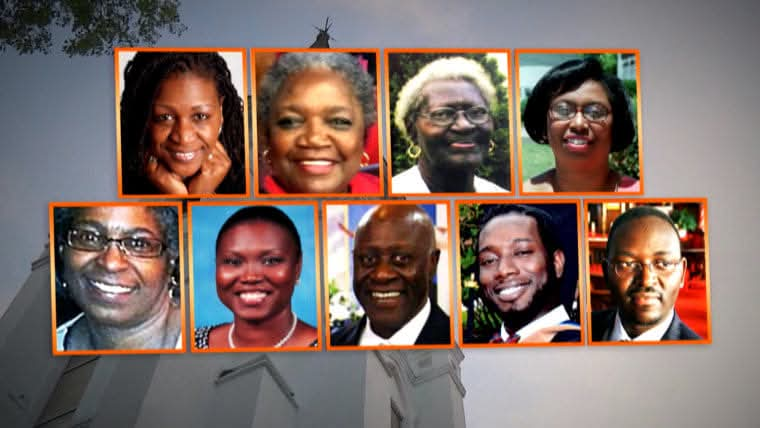BOXING DAY: Remembering the Boxing Day Sumatra–Andaman Earthquake and Tsunami

Did you know that the 2004 earthquake and tsunami that occurred in the Indian Ocean is one of the deadliest natural disasters in recorded history that claimed the lives of more than 200,000 people in 14 countries?
On 26 December 2004, at 07:58:53 local time (UTC+7), a major earthquake with a magnitude of 9.1–9.3 magnitude scale (Mw) struck with an epicentre off the west coast of northern Sumatra in Indonesia, while a massive tsunami with waves up to 30 m (100 ft) high, known as the Boxing Day Tsunami (named after the Boxing Day holiday), devastated communities along the surrounding coasts of the Indian Ocean, killing an estimated 227,898 people in 14 countries in one of one of the deadliest natural disasters in recorded history.
The undersea megathrust earthquake, known by the scientific community as the Sumatra–Andaman earthquake, was caused by a rupture along the fault between the Burma Plate and the Indian Plate, and reached a Mercalli intensity (a seismic intensity scale used for measuring the intensity of shaking produced by an earthquake) up to IX in some areas.
The direct results caused major disruptions to living conditions and commerce in coastal provinces of surrounded countries, including Aceh (Indonesia), Sri Lanka, Tamil Nadu (India) and Khao Lak (Thailand). Banda Aceh reported the largest number of deaths.
The earthquake was the third-largest ever recorded, the largest in the 21st century and had the longest duration of faulting ever observed, between eight and ten minutes. It caused the planet to vibrate as much as 10 mm (0.4 in), and also remotely triggered earthquakes as far away as Alaska. Its epicentre was between Simeulue and mainland Sumatra. The plight of the affected people and countries prompted a worldwide humanitarian response, with donations totalling more than US$14 billion.
The 2004 Indian Ocean earthquake was initially documented as having a moment magnitude of 8.8. In February 2005, scientists revised the estimate of the magnitude to 9.0. Although the Pacific Tsunami Warning Center has accepted these new numbers, the United States Geological Survey has, as of 2022, so far not changed its estimate of 9.1. A 2006 study estimated a magnitude of Mw 9.1–9.3; Hiroo Kanamori of the California Institute of Technology estimates that Mw 9.2 is representative of the earthquake's size.
The hypocentre of the main earthquake was approximately 160 km (100 mi) off the western coast of northern Sumatra, in the Indian Ocean just north of Simeulue island at a depth of 30 km (19 mi) below mean sea level (initially reported as 10 km or 6.2 mi). The northern section of the Sunda megathrust ruptured over a length of 1,300 km (810 mi).
The earthquake (followed by the tsunami) was felt in Bangladesh, India, Malaysia, Myanmar, Thailand, Sri Lanka and the Maldives. Splay faults, or secondary "pop up faults", caused long, narrow parts of the seafloor to pop up in seconds. This quickly elevated the height and increased the speed of waves, destroying the nearby Indonesian town of Lhoknga.
Indonesia lies between the Pacific Ring of Fire along the north-eastern islands adjacent to New Guinea, and the Alpide belt that runs along the south and west from Sumatra, Java, Bali, Flores to Timor. The 2002 Sumatra earthquake is believed to have been a foreshock, preceding the main event by over two years.
According to the U.S. Geological Survey, a total of 227,898 people died. Measured in lives lost, this is one of the ten worst earthquakes in recorded history, as well as the single worst tsunami in history. Indonesia was the worst affected area, with most death toll estimates at around 170,000. An initial report by Siti Fadilah Supari, the Indonesian Minister of Health at the time, estimated the death total to be as high as 220,000 in Indonesia alone, giving a total of 280,000 fatalities. However, the estimated number of dead and missing in Indonesia were later reduced by over 50,000.
The tsunami caused severe damage and deaths as far as the east coast of Africa, with the furthest recorded fatality directly attributed to the tsunami at Rooi-Els, close to Cape Town, 8,000 km (5,000 mi) from the epicentre. In total, eight people in South Africa died due to high sea levels and waves.
Relief agencies reported that one third of the dead appeared to be children. This was a result of the high proportion of children in the populations of many of the affected regions and because children were the least able to resist being overcome by the surging waters. Oxfam went on to report that as many as four times more women than men were killed in some regions because they were waiting on the beach for the fishers to return and looking after their children in the houses.
States of emergency were declared in Sri Lanka, Indonesia, and the Maldives. The United Nations estimated at the outset that the relief operation would be the costliest in human history. Then-UN Secretary-General Kofi Annan stated that reconstruction would probably take between five and ten years. Governments and non-governmental organizations feared that the final death toll might double as a result of diseases, prompting a massive humanitarian response.
In addition to a large number of local residents, up to 9,000 foreign tourists (mostly Europeans) enjoying the peak holiday travel season were among the dead or missing, especially people from the Nordic countries. Sweden was the European country most severely affected both in absolute numbers, and by a wide margin when considered in relation to the country's population, with a death toll of 543. Germany was close behind with 539 identified victims.
Source: Wikipedia
#penglobalhistory



